Mad Max was released in 2015 after years of rights battles, false starts and tortured development. It captured everything about Mad Max that made it so popular in the first place: it was gritty, ruthless and gruesomely fascinating. It was filled to the brim with bombastic car action and amazing desert visuals. It explored both the madness of a post-apocalyptic world, and the madness within Max.
At this point I could have been talking about either George Miller’s film, ‘Mad Max: Fury Road’, or Avalanche Studio’s game, ‘Mad Max’, released some four months later. But now the road diverges.
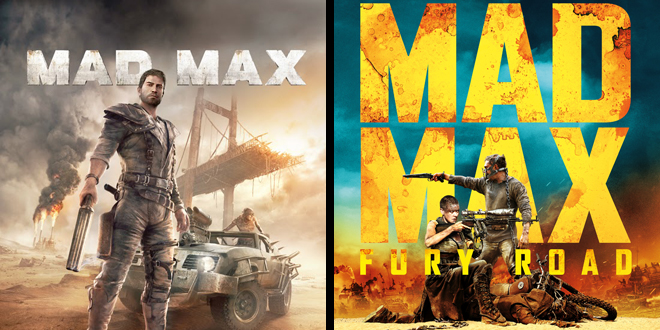 Fury Road was an outstanding critical and commercial success. It grossed more than $350 million worldwide and was nominated for 10 academy awards, winning in six categories.
Fury Road was an outstanding critical and commercial success. It grossed more than $350 million worldwide and was nominated for 10 academy awards, winning in six categories.
The game, commercially, posted no such high numbers. It won no awards of particular note, and it got somewhat lost in the noise of a year full of more popular open world games.
So why was Mad Max, the game, a project that could not hit the same commercial and critical heights as the movie? What, if anything, went wrong in its marketing? And what could be done about it?
Development hell
The Mad Max Game was not in development limbo as long as the 4th movie in the series, but it had no easy road to launch either. The story of how the game came to be developed and published by Avalanche studios is a long one, and has been told better elsewhere. But to give you the top level version:
Cory Barlog, a director of the hugely successful God Of War games, struck up a friendship with George Miller, the creator of the Mad Max franchise, back in 2008. Together they worked on a couple of ideas for a Mad Max game that never quite made it off the ground.
Later, Barlog started working as a consultant for the Swedish Avalanche Studios and introduced the idea of Mad Max game. Despite the end of Barlog’s work with the company and his departure to Crystal Dynamics in 2012, the idea and project stuck with Avalanche.
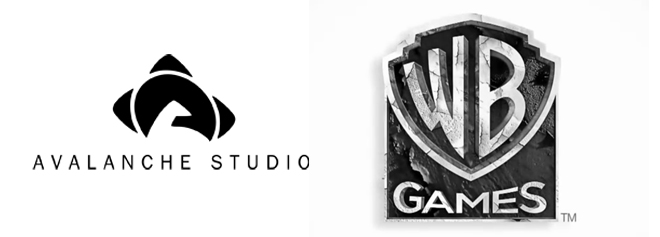 Avalanche Studios eventually received approval to develop the game, with Warner Brothers, also responsible for the latest edition of the movie franchise, playing the role of publisher. Thus, the game was duly announced at E3 2013 for Xbox One, PS4, Microsoft Windows, PS3 and Xbox 360.
Avalanche Studios eventually received approval to develop the game, with Warner Brothers, also responsible for the latest edition of the movie franchise, playing the role of publisher. Thus, the game was duly announced at E3 2013 for Xbox One, PS4, Microsoft Windows, PS3 and Xbox 360.
Lesson learned
That’s the simple version of the story, the game at other times was close to being developed and published elsewhere, but I think – in the circumstances – Warner Brothers and Avalanche Studios were a good marriage for the game.
With the Mad Max movie on its way too, it made sense for the company behind its distribution to take on the publishing role for the game too. And Warner Brothers Interactive Entertainment had a good pedigree of working with already established IP that had a movie running alongside the production of a game.
Thankfully we live in a time where poor quality and rushed-to-market movie tie-in games are not the regular occurrence they once were. Warner Brothers and RockSteady’s, Batman Arkham Asylum, is one of the games I would give the most credit for that.

At the height of the extremely successful Christopher Nolan Batman franchise, Warner invested in a game that could stand on its own merits and capitalise on the brand and popularity of Batman, without being tied to the production schedule of the movies. It had made that mistake with Batman Begins, a poorly received game tied to the first movie. Instead, there were no limitations imposed on the production schedule, design, or story of Batman Arkham Asylum. The game got a bunch of sequels which tells you all you need to know about how successful the approach was.
The same principle was applied to the Mad Max franchise. There would be connections between the game and the new movie, but in no way were the creative decisions and production schedule of Avalanche dictated by the other. This was the studio’s own take on Max and his world. In one interview with Venturebeat, Peter Wyse, the Vice President of Production and Development at Warner Bros put it as clear as you could want:
“It’s a lesson we’ve taken to heart at Warner Bros. We don’t build games that are based on movies.”
Making a game not tied to the film gave it the best chance to live or die on its own merits, but wouldn’t sacrifice the branding bonus and zeitgeist the movie could add.
Enough pretenders
The Mad Max movies of the 70’s and 80’s were full of mood and atmosphere. They really dropped you into a strange and compelling world. For that reason, an open world game was always going to be the genre of choice for a game based on the franchise – here was a chance to drop you into George Miller’s crazy world.
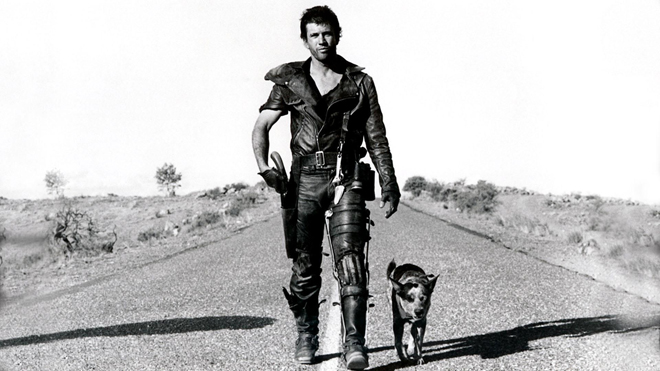
And of course, over the years, the post-apocalyptic environment has been a favourite setting of open world games. Many have been directly influenced by the Mad Max films of the 70’s and 80’s: it’s there for all to see in games like ‘Fallout’, ‘Rage’ and ‘Borderlands’. It therefore feels only right that the Mad Max franchise got its own attempt at the genre. With so many imitating and paying homage, it deserved a shot.
As such, not only did Warner Brothers seem a sensible publisher of choice for the project, but, the same could be said for Avalanche Studios.
In Avalanche Studios you have a development team with tons of experience and know-how in creating open world games. The over-the-top, frantic, and open world of the ‘Just Cause’ franchise is Avalanche’s bread and butter.
Big nothings
In Mad Max, you’re given a huge desolate world to play within. When you try to go beyond the barriers set by the developers, you’re greeted with a big flashing message:
‘WARNING: YOU ARE ENTERING THE BIG NOTHING’

If you keep heading that way, your health depletes and it’s ‘GAME OVER’.
Every open world game has its own version of this mechanic, a way of keeping you within its walls. But some open world games feel like you’ve entered the ‘Big Nothing’ right off the bat. We’ve all played a game where it feels like the developers have obsessed about creating a huge world, but forget to fill it with anything interesting or engaging gameplay wise. You end up wondering why the game needed to be open world in the first place, with the gameplay in no way improved by the design choice.
Is Mad Max one of those games? Well, yes and no.
Emergent car combat
Mad Max has gameplay and core ideas that make sense for an open world. For a start, one of the main focuses of the game is your car, the Magnus Opus. You spend a great deal of time in it, and when you’re not, a lot of the time you’re collecting the resources that allow you to improve it and customise it to your exact liking. This focus on the car, the thing you use to get around the open world is a great design choice.
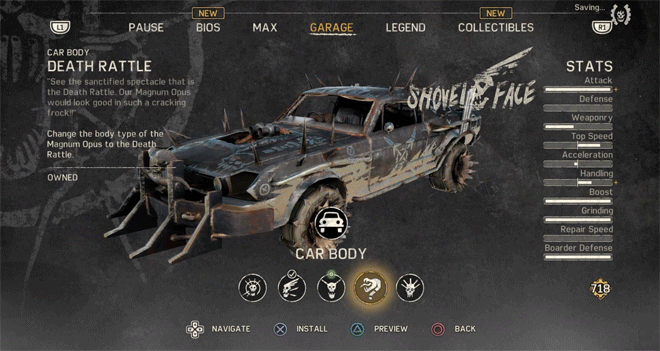
In so many open world games, the moment a fast travel option become available, you can easily find yourself skipping the journey between point A and point B, basically creating your own series of levels. Mad Max does have fast travel, but – much more than other games – you don’t use it.
Instead you want to go on that journey yourself, because you’ve just spent an hour collecting resources and upgrading your car. You don’t want to just look at a loading screen to get to your next objective, you want to put your new upgrades and look to the test.
That feedback loop is good design, and helps justifies the need for the game to be open world in the first place.
Secondly, the world of Mad Max is meant to be a desolate place. In many games the impression of a busy and lively world is created. But around every corner is a door you can’t open, a building that can’t be explored or another mindless NPC. Picking a desolate environment helps avoid that disconnect. There’s less in the world than in other games, but everything you do find in the desolate landscape: outposts, sniper towers, large camps, wastelanders and enemy vehicles, can all be played with. Nothing is just for show.

And it’s that last one, the enemy vehicles, that is the most fun. Mad Max’s car combat delivers great emergent action. You get great cinematic car battles. You rub wheels at high speed, dodge and escape from certain death, and blow your enemies into smithereens. They’re not set pieces or scripted events, but exciting bits of action that come about naturally and often.The car combat delivers exciting emergent gameplay that makes the open world design choice rewarding.
A litany of available upgrades to Max, the car and the camps you discover – plus plenty of side missions – keep the player busy with lots to do in the world. And some solid hand-to-hand combat and exploring on foot mix-up the gameplay. But there is no denying the car is the star of this game and the open world.
Too much?
From a marketing point of view, Mad Max also needed to be an open world game – that’s what the franchise lends itself to and the developers did a good job delivering gameplay that justifies the decision. My criticism would actually just be: bloody hell, they delivered a lot of it.
Ever since GTA 3, open world games have somewhat ruled the AAA space. A battle of escalation has ensued with developers competing to make ever bigger and bigger game worlds. In the year Mad Max came out, Metal Gear Solid 5, Witcher 3 and Fallout 4 all hit shelves as well. Mad Max was probably the smallest of the four, but completing it 100 per cent would still take 50+ hours easily.

Mad Max’s open world is good, but it’s not that good. And it’s arguably not as good or as engaging as those competitors. Eventually the tasks become repetitive and the lustre wears off. There is only so many mines one can disarm and camps one can clear before they become chores. Although that’s not a problem unique to Max I must add. But all those other open world games which released in the same year were more successful commercially and critically. They were bigger fish and IP to compete with. Mad Max is a huge franchise, but it’s not like the core gamer audience is of an age that grew up with the movies.
I played Mad Max for 37 hours, and I have to admit, those last 10 hours were just so I could say I completed the main story missions before writing this. I’m not alone in struggling to find the motivation to see the game to the end.
On the PS4 version of the game, only 0.9 per cent of players have achieved the platinum trophy that would indicate they did everything the game had to offer. There are five acts to the game but only 51 per cent of players completed up to act two. That figure almost halved again for the final act of the game, with just 27 per cent seeing the main story to the end, on PS4 at least.
Such a low completion rate is not uncommon in the video game industry. In fact, the trophy rate for completing Fallout 4’s main quest is 29.9 per cent; Witcher 3’s is 30 per cent; and Metal Gear Solid 5’s is as low as 19.9 per cent. Even story-based games don’t have much higher completion rates. In Uncharted 4, only 41 per cent of players have actually seen the story to the end. But for more than half of users to not even complete half the game seems a particularly high dropout rate.
It seems crazy that so much development time is being sunk into sections of games that a majority of players will never even see. What would happen though, if one of these big open world games dared to make a game half the size? Would there be an audience for a ‘budget’ open world game? Half the size, half the things to do and half the price – but with fewer players burning out before they get to the end. A game in which players actually see everything worthwhile seeing.
So why do developers make games so big?
Developers must know that games are completed by such a small proportion, so why are so many seemingly obsessed with size? Do they make them so big because it’s simply not that hard to anymore? Once you’ve made a base template for a camp or a mission, is it easy in the code to replicate that as many times as you want and just re-skin it? Then you can put a more impressive number or slogan on the back of the box:
‘Our biggest and best – living and breathing – open world yet!’
Well for Mad Max, it doesn’t seem to be the case that making an open world is just easy. In one interview game director Frank Rooke said:
“A lot of effort – and expense, I should add – went into creating unique locations. It’s so easy to fall into the trap of creating templates and just popping them around. We couldn’t do that – everything had to feel like it was unique and fresh, made with purpose in that location, with its own story to tell. To me, that’s what makes it fun to go out and explore.”
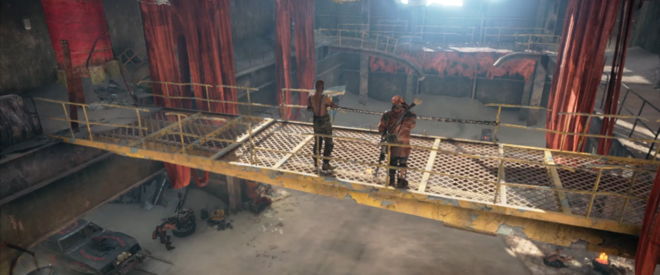
No, that’s not it then – making these huge worlds such as Mad Max is no easy or quick task.
Here’s what I think it is: developers are ambitious, creative and want to makes games they want to play. When you play a game that’s so engaging, so deep, and incredibly fun to be in, you devour every last bit of content, and spend 200+ hours in it. There’s no better experience than that in gaming. The people who have the platinum trophy in open world games will be fans of those studios for life. Developers want to make that experience.
However, are there enough of these kind of gamers? Way less than half of the audience got close to seeing even just all the main quests in Mad Max. In a year when so many other competitors tried to capture the same audience, would a smaller game and a shorter production time have been a wiser choice?
I actually bought the game a year after its release (hence the timing of this post-mortem) for £20. After 25 hours, I was very happy with my purchase. I’d cleared about roughly half the game world and had a good time doing it, but I certainly felt no compulsion to see it through to the end. I got burned out trying to obsessively remove every objective and task off the world map.
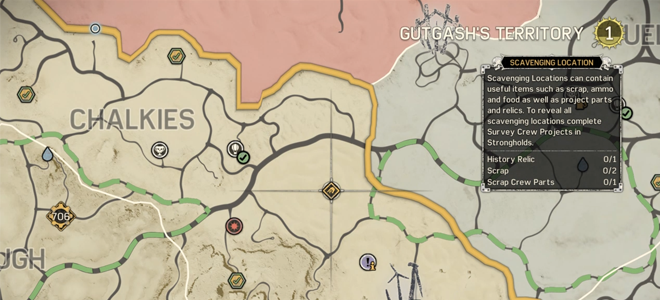
That compulsion consumed me and I discarded the main story. A main story that I have to say was decent and compelling when I did go back and complete it for the purpose of this case study. The size of the open world actually stops people seeing some of the best the game has to offer. Instead they are clearing yet another camp.
Why not deliver the small something?
I’m not saying Avalanche studios made a glaring error here. But with hindsight, it would have been fascinating to see someone do something entirely different to its competitors in that hectic year of open world games. The developer could say:
“We’re delivering you the same open world gaming experience – but ours is half the size, and half the price. You’ll have time to finish it and you’ll save money”
I’m incredibly intrigued by how that would do in the market. How would a publisher go about selling that idea to its audience? Would the market completely reject it out of hand? Once you label your own game as ‘budget’ – are you limiting your success before you even start. Maybe if you don’t value it, why should the gamer?
It of course would not please everyone, but as the gaming public starts to skew older and older, with less dropping the hobby as they reach adulthood, there is potentially an audience who want the open world experience, but just don’t have the same amount of time they did when they younger. A smaller and manageable open world could be a key differentiator in the market and lead to a winner.
You only have to look at the two biggest games of this year to see that the open world genre is going nowhere: ‘Horizon Zero Dawn’ and ‘The Legend of Zelda: Breath of the WIld’. There’s a place for those kind of games, and Mad Max could have been one of them. But in such a competitive year, Mad Max struggled to gain attention.
It would be harsh to say Avalanche studio delivered a ‘Big Nothing’ of a game, but I would have loved to see how a definite ‘small something’ would have turned out.
What could have been?
Now hindsight is 20/20, but there are a couple of other reasons a smaller game could have worked in Mad Max’s favour from a marketing point of view. As it was, the marketing campaign for the game was lacklustre. If the studio had made a smaller game, first and foremost, the game could have had a shorter and cheaper production time, and subsequently released sooner, before the huge amount of open world competition.
In the end, the game was delayed, and the versions for previous generation consoles were actually cancelled too. It was just PS4, Xbox one and PC now. A smaller game might have allowed for those versions to survive, but maybe more importantly, also allowed the game to release closer to Mad Max: Fury Road.
When it came to researching this, I expected to find a lot more evidence of cross marketing between the two. But it very much felt like both were left to their own devices, despite the Warner Brothers link.
The film was received very well, and I would argue the five month release gap prevented the game from capitalising effectively on the zeitgeist and brand. Despite this criticism, overall I still praise Avalanche and Warner Brothers for not making a crappy tie-in game. It’s best to release a game when it’s ready, not when external factors, like the production of a movie, demand. But if they had made a smaller game, they could maybe have had the best of both worlds.
There would have been another huge benefit of releasing the game earlier. I’ve mentioned the fact 2015 was a hugely competitive year for open world games at ad nauseum. But what I’ve failed to mention yet, which only compounds the point, is that Avalanche released another open world game of it’s own just three months after Mad Max.

‘Just Cause 3’ was released in October 2015. This was the established franchise that proved Avalanche were a good studio to go with for an open world game. Asking their audience to buy two open world games in such a short space of time, doesn’t feel like something that could ever have been the initial plan. Avalanche essentially ate it’s own lunch. Much of its established base audience were always going to prefer the sequel to a successful franchise, over a revival of a 70’s franchise. Why not release Just Cause 3 in the first quarter of 2016 at least and give Mad Max more breathing space and attention.
I like to delve in and analyse the social media accounts of the games that are the focus of these case studies. But, the twitter for Mad Max was honestly quite unnoteworthy, apart from one thing. In mid December of 2015, the twitter account essentially died. When Just Cause 3 came out, activity simply stopped.
While the account was not particularly doing anything brilliant on the marketing front while it was active, it’s early demise is not a good sign. Presumably, Avalanche’s marketing efforts and resources switched over to Just Cause. Again, showing maybe why it was unwise to release two of its game so close to each other.
What really happened?
I’ve talked enough about what could have happened if Mad Max had taken a different approach and released at a different time. But what did it do with the situation it did have in terms of marketing?
Well honestly, nothing out of the ordinary, and nothing that stands out as particularly effective. The game had moderate mainstream coverage, such as a game informer cover; it was reviewed by all the major outlets; and a handful of people’s Twitch streams were promoted by the social media team.
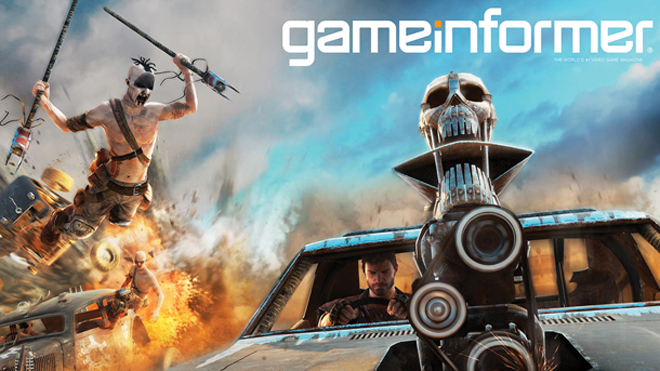
It had a sponsorship deal and competition with Rockstar energy drink. I personally don’t really understand the constant energy drink sponsorship games get. I would love to investigate that a little more deeply at some point. I mean, how effective can these really be – I’ve yet to discover any convincing evidence.
The competition reward was pretty cool, you got to drive a big scary Mad Max car inspired from the game. You entered using codes found on the energy drink’s caps. The Rockstar energy drink facebook page has more than 2 million likes. But the views on the Youtube channel of the grand final of the competition only has 1,800 views. That’s frankly pants, and suggest the deal was not worth it in terms of exposure. I don’t know the number of people who watched it when it was first live-streamed to be fair, but it didn’t seem to set the social media game world alight.
Lastly, on the marketing front, there is a hidden away video on Avalanche Studios website – not the website for the game itself. The TV show, West Coast Cars, a sort of evolution of Pimp My Ride, built the Magnus Opus car from the game. The car they built is pretty awesome. But the video is not of the highest production value, and clearly didn’t reach a huge audience. That video has 48,000 views. It’s a cool idea for a bit of marketing, but not brilliantly executed in all honestly. Maybe that’s why it’s hidden away in the first place.

Missed opportunity
I’m a big believer on this site that the industry should be doing more for disabled gamers. A simple change in attitude and approach to development is all that is needed to ensure disabled gamers can enjoy a game from start to finish. If you plan for it at the beginning of development, it shouldn’t be a problem.
Mad Max is a game I really wish had included more disability control scheme options for the game. A customisable control scheme is always a good place to start but Mad Max lacked those options. And there a few moments in the game which require repeated button mashing, which is a known challenge that some disabled games struggle with. Uncharted 4 for example, has an option to replace button mashing sequences with a button hold instead. I hope these kind of options start to become standard for all games in the next few years.
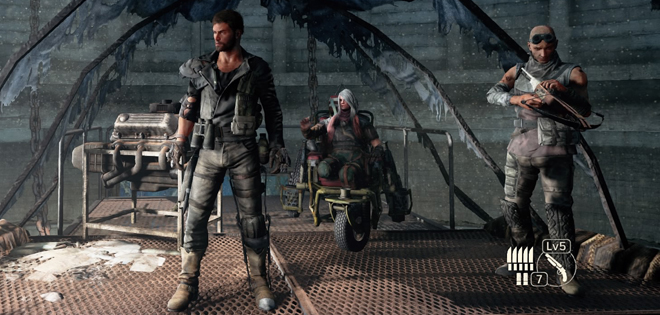
The reasons it’s a disappointment in Mad Max’s case in particular however, is the content of the game itself deals with disability so well. Something the entire Mad Max franchise has done well in fact. There are so many characters in the game, including Max, who have a disability (Max’s leg is in a brace and he has a myriad of limping animations in the game).
Not one of the characters in the game is defined by their disability – it’s never who they are. Tauriq Moosa, writing for Polygon, put it better than I ever could – I recommend his article highly. For a game that dealt with disability so progressively and sensitively, it’s frustrating that considerations for disabled players seems to have been overlooked.
Escaping the big nothing
Mad Max is a game I really quite enjoyed. A year after release, in a quiet period for games, I was really happy with the £20 I spent on it. At full retail price, at a time when so many other open world games hit the market, I’m not so sure I would have been as happy with my purchase. Maybe I would have been better off spending it elsewhere. I think that’s the conclusion many gamers came to in that crowded 2015.
I think Avalanche studio made a lot of objectively good logical decisions. They built a game independent of the film and its timeline, they choose a genre that worked for the franchise, and they made a game that they would like to play themselves. I think they did what is standard accepted practice in the industry – apart from releasing Just Cause 3 a few months later – that decision still baffles somewhat.
However, with the benefit of hindsight, I’m really intrigued what the market’s response to something different would have been. Rather than another game that feels like a big nothing, what would happen if someone delivered a smaller open world experience at a more affordable price? Two years later, I still don’t have the answer to that question, and I don’t know of any studio brave enough – or maybe stupid enough – to have tried to find out.
In the meantime, here’s to more big nothings.


The problem is the premise of the game hooks you, and while Avalanche says “each areas is unique”… the game play is still very cookie-cutter.
Yes, compared to Just Cause 2’s cookie-cutter “radar station, etc, etc copy-pasted for the umpteenth time”.. Mad Max has unique-looking camps.
But, they cookie-cuttered what you could do in the game…
* go take down sniper towers and scarecrows
* go take out a convoy
* go take out a camp (any kind, top dog, storage, pumping, stank gum.. they’re camps even though unique and a bit different each)
* go do some side misisons
* go do main story
The side missions and story missions were unique. There was a purpose.
Most everything else was just .. cookie cutter repetition to take down an area’s threat level.
And the way they rewarded the player, with the dichotomy of story / side missions unlocking certain things and lowering threat unlocking others … basically punished you regardless of how you played.
If you did story / side missions, you would unlock the V8 while your car was very weak. If you 100%’ed areas before moving on, your car could unlock upgrades that were way more powerful then what side / story missions offered. So, you were OP.
And, the entire story pushes you to get this V8 engine… you think “omg, when I get this thing, the REAL game is going to begin and we’re gonna tear things up!”
Nope.
Get the V8, and then you have a few missions thrown at you that have a HUGE SENSE OF URGENCY… so you feel pushed to pursue them and then … game over.
So, in a way, getting the V8 feels like putting the last nail in a coffin instead of an accomplishment that unlocks a lot more of the game.
The progression of the game was just awful. I can see how they designed it for the “average gamer” that just wants to play, go do some stuff then follow the story… and maybe get a threat level of 2 or 3 in areas before moving on… but, the “average gamer” is a myth. Most gamers are extremist… either they want to blow through everything quickly (ie: blow through the story and ignore eveyrthing else) or they want to 100% everything before moving on… they want to try to min/max their power before moving on so they feel they have the most advantage in the new area.
But, the way the game is designed is that rushers are punished by having an V8 in a weak car, and completionists are punished by having an awesome car that’s using a V6 for 99% of the game until they get the V8 and the game is over.
Gamers also noticed that the game could have been so much more … like they had aspirations that they didn’t meet before shoving it out the door.
There are clearly “boss” character designs… you see the “top dog” guy 8 times, and people complained about that (same enemy, same way to kill him, wash-rinse-repeat 8 times).
There’s an “Architect” guy that is clearly supposed to be a Roadkill faction boss character that’s been repurposed for a paltry side mission.
The Stank Gum character is used time and again as a sub-boss antagonist… but he’s spread all over the game.
The start of the game has you fighting Scrotus and braining him with a chain saw… and the cut scene looks like what should have been the END CUT SCENE TO THE GAME.
In other words… it looks like what they had in mind was each area was controlled by specific clans/ factions… Roadkill in one, Stank Gum in another, Top Dog guy in another… and Max would face off with specific clans and their leader to work his way up to Scrotus before fighting Scrotus by jumping ona convoy and fist-fighting him there and then chain-sawing his face.
But, due to budget / time constraints, they had to scrap that idea and just reshuffle the assets they had into something they could shove out the door quickly.
You can clearly see there is supposed to be more to the game… so what you do get in the game seems lackluster.
Likewise… they didnt’ leverage full advantage of game mechanics in the game. The cut scene with you and scrotus on the convoy duking it out … why didn’t convoy take over missions include huge land carriers that you could jump on? That was part of two movies (Road Warrior and Fury Road)… In Just Cause 2 Rico could jump on cars and then jump to others to take them over. It would have been great to get on the hood of your car to let Chum drive, then jump on a huge semi hauler and fight your way up it to take it over.
Instead… you simply drive your car and blast things with your thunderpoon. Boring.
The concept of piecing your car together seemed like it was based on mixing and matching parts you stripped off other cars you stole and took back to base. That got diluted down to just having a few car bodies and upgrades… leaving no real reason to collect otehr cars, and if you did collect any they rust from disuse since Chum doesn’t ride in them.
The dog clearly seems like a companion that was supposed to get out and help you in fist fight areas… a la Fallout 4. Instead… he just rides around in a specific vehicle sniffing out land mines (which is a tedious, BORING task that is repeated like 8 times… ugh)
The design decisions in the game are just perplexing…
You can pause the game while driving 80mph and insta-swap parts on your car… gonna ram something? Just pause the game, toss on a ram, unpause and ram the thing, then pause and take the ram off. This is unbelievably stupid. But, it saves players from having to drive back to bases to kit out their car differently for mission-specific purposes.
But… then they have tedious stuff like driving around looking for land mines.
Or driving around collecting scrap… garbage… all scattered around the landscape… like you’re some kind of post-apoc janitor cleaning up after folks.
It’s boring as all get out…. go here… collect some junk… go here … collect some junk … THE MOST BORING THING I’VE EVER DONE IN A GAME.
Yeah… let’s pause the action of vehicle driving, combat and other fun stuff… to go collect garbage… and LOTS of garbage… b/c I need 1000 pieces of garbage to upgrade my car.
I clearly see other vehicles driving aroudn with the parts I want. Why can’t I just kill the driver, and take that vehicle back to my base to strip for parts? Taht would be WAY MORE LOGICAL AND ENTERTAINING!
Oh… right… b/c Avalanche … being Avalanche… thinks “open world game” means “waste hours of your life collecting the same crap around the landscap hundreds of time over and over, b/c it’s easier to do that then implement something really cool and entertaining.”
They even duplicated this with the “go destroy the Scrotus symbols” and “collect history relics” stuff. It’s just a huge scavenger hunt looking for tons of things scattered about the landscape that serve no purpose other then “50+ hours of game play!” and “achievement unlocked!: You actually wasted your time looking for the hundreds of pieces of crap we tossed all over the place! You’re such an idiot that has no life!”
So, they say the game was “uniquely crafted”.. but it boils down to the same cookie-cutter actions over and over… take down scarecrows / snipers, go collect garbage, take out a camp, etc, etc, etc… now do that again and again for each area.
And then their decisons to nerf and bolster certain things are just baffling and frustrating…
They nerf the difficulty of the game right out of the gate by allowing you to upgrade max and the vehicle SO MUCH there’s just no difficulty. You can get a thunderpoon that blows vehicles up… no more car combat, b/c you just nuke things. And you build a project in the strongholds that refills all your ammo and get upgrades from Griffa that make it easier to find more ammo … you’re never without thunderpoon ammo… so you just blow stuff up. No more vehicle combat. Boring.
Likeiwse with health, water, gas… there’s so many upgrades to them that you will NEVER HAVE A PROBLEM with them.
Enemies difficult? Not after you upgrade max’s gear and combat skills. He becomes a one-man-army that decimates EVERYONE EASILY.
The only way to make the game challening is to IGNORE all the upgrade paths… suddenly you’re scrounging food water and gas.. suddenly combat is more challenging.. suddenly you can’t just blow up vehicles and end combat you have to instead ram and grind them.
And, finally… they put a MASSIVE NOISE GATE in the middle of the game.
You want that V8? You have to do a mandatory race with Stank Gum to get it.
This race is THE WORST THING IN THE GAME that has put off many players from progressing.
The race makes the driving physics feel awful as you’re constantly spinning out, there’s healing sprays that they don’t tell you about but you have to google up to figure out…
The race was easy at first… people would 100% and max their thunderpoon and destroy him in one shot. Well… that’s how min/maxing and completionists SHOULD BE REWARDED for busting their butts. Likewise, if the race was hard, people could simply go grind for upgrades to max the thunderpoon as a way to get around the race.
But, no… Avalanche wanted the race to be challenging REGARDLESS OF HOW MUCH WORK YOU PUT INTO UPGRADING YOUR STUFF.
So, they rolled out a patch that nerfed your poon to lowest level… making it where it takes like 5 shots to destory stank gum.
They make him purposefully cheat by zipping way far ahead if you don’t get him in the first 30 seconds … so then you’re stuck catching up to him… and only in the last 30 seconds of the race does he let you catch up and TRY to get him.. but by then you’re usually wasted or can’t shoot him enough or spin out of control and lose him again.
And there’s NO WAY AROUND THIS RACE.
By forcing it to be the way AVALANCHE wanted by force-nerfing player’s upgraded tools… they instantly aggravated and alienated a player base that couldn’t get past this horrible race.
And that’s why a lot of gamers dropped off.. they couldnt’ get past this nightmare.
You have an open-world game that’s trying to promote you DOING WHAT YOU WANT, HOW YOU WANT, WHEN YOU WANT…
Then you bottleneck it with a specific activity that goes … “I don’t care how you have been playing, this is how things are going to be right now and screw you.”
It’s like how in the Thief game players that played a very slow, calculating character got punished when forced-action / parkour levels were tossed at them. “I don’t care how you’ve been playing.. you’re going to play the way WE WANT YOU TO PLAY right now.”
It’s a huge slap in the face to the player.
And this bottleneck caused a huge drop off of players.. it’s why many haven’t finished the game; they gave up in frustration.
So, while Avalanche says “we spent lots of time and money making unique experiences…” … well, you made unique AREAS… but the overall game play is just cookie-cutter BS over and over.
In Fallout 4, Witcher 3, Metal Gear… each area had unique plots, purpose, ways to do things, etc. They were compelling.
In Mad Max, each area is just a repeat of the past area… and they hope you saddle up to slog through it and grind through it long enough to get to the end of the game.
Avalanche is masters of making open-world games have action, but they haven’t figured out how to make open world games compelling with longevity. They keep filling them with scavenger hunt BS, boring cookie-cutter garbage, and awkward design decisions that creates these dichotomy of play that punish you regardless of how you play.
Mad Max was a great-looking game… and a fun game if you self-imposed some challenges (like not using balloons, or collecting scrap except through camps you take, or not using griffa at all, or not upgrading anything on max except skills, etc, etc)… but it’s not as compelling of a game as the other open world games that came out. It’s because Avalanche hasn’t figured out that “open world” can no longer mean “boring repetitive stuff” and folsk will lap it up. Folks want open worlds, but populated with real story and meaningful game play.
When they take out things in an area, they want to see some kind of effect.. like friends take over camps and help you with random vehicles helping you in combat, or mounting turretst that attack enemies or .. something.
In Mad Max, you take things out… “threat level has been lowred.. you’ve unlocked more stuff”.
Whoopee… there is no real tangible benefit to it all other then that.
And in a world that is hurting for resources, they have you GO AROUND AND BLOW UP RESOURCES. Wut?
Just so many stupid design decisions.
LikeLike
Yo Blah Blah, this is one of the best write ups on everything that’s wrong with Mad Max. I want to love it so much because the world really is compelling – they did a great job with creating the atmosphere. I’m still endlessly fascinated with how the world looks and how every camp, every encampment, every scavenger area is completely different and many of them hint at some kind of story (the roadkill worshipping the skeleton with horns, the couple who died together on the mountaintop camp on a mattress, with red hearts painted on a wall, the couple who died half buried in sand in the boat, etc) but it seems like so much work for nothing in the long run. You hit the nail on the head when you said it’s all one big scavenger hunt. And for what? There’s not even a new game+ mode or you can’t even reset all the convoys and camps. You spend the game building your car to be badass and then you end up with a world with nothing to kill.
If avalanche was smart, they’d use your post for R&D. I’m guessing they’re not smart though.
Also another timewaster was constantly going to talk to informants all over the map when half of them are just there to blow sunshine up my ass. “Hey! The convoys are disappearing! Is this your handiwork?” Whatever.
Anyway, just wanted to say nice critique.
LikeLike